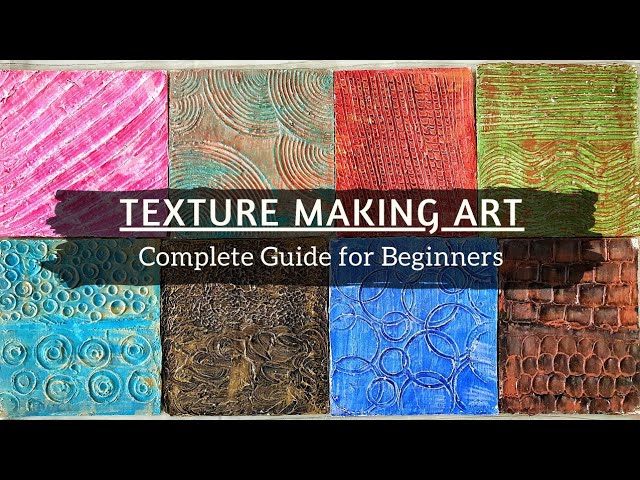Are you tired of using the same old textures on your projects? Do you want to add a unique touch to your designs? If so, texture tools are the answer! With the right texture tools, you can create beautiful and one-of-a-kind textures that will make your designs stand out. In this guide, we will explore everything you need to know about texture tools and how to use them effectively.
What are Texture Tools?
Texture tools are instruments or software designed for creating textures. They come in different forms, including brushes, stamps, rollers, and digital software. They allow artists and designers to create unique and realistic textures for their projects. Texture tools are essential for creating backgrounds, illustrations, logos, typography, and many other design elements.
Types of Texture Tools
There are several types of texture tools available in the market. Each type has its unique features that make it suitable for specific design purposes.
1. Brushes
Brushes are one of the most popular texture tools used by designers. They come in various shapes and sizes and can be used with different mediums such as paint, ink, or digital software. Brushes are ideal for creating hand-drawn textures like watercolor or oil paintings.
2. Stamps
Stamps are pre-made designs that can be applied to a surface to create a texture. They come in various shapes and sizes and can be made of rubber or silicone. Stamps are perfect for creating repetitive patterns like wallpaper or fabrics.
3. Rollers
Rollers work similarly to stamps but allow for more coverage on larger surfaces. They come in various widths and materials like foam or rubber. Rollers are ideal for creating textured walls or large background surfaces.
4. Digital Software
Digital software is becoming increasingly popular among designers as it allows for more control over the creation process. Popular digital software includes Adobe Photoshop, Corel Painter, and Procreate. Digital software is ideal for creating digital illustrations or designs.
How to Use Texture Tools
Using texture tools is relatively easy, but it requires practice and experimentation to achieve the desired results. Here are some tips on how to use texture tools effectively:
1. Experiment with different tools and mediums to find what works best for you.
2. Start with a light touch and build up gradually to create more depth.
3. Combine different textures and mediums to create unique effects.
4. Use contrasting colors to make your textures stand out.
5. Practice regularly to improve your skills.
Texture Tool Maintenance
Proper maintenance of texture tools is essential for their longevity and effectiveness. Here are some tips on how to maintain your texture tools:
1. Clean your brushes, stamps, and rollers after each use with warm water and soap or a specialized cleaner.
2. Store your texture tools in a dry place away from direct sunlight or heat sources.
3. Replace worn-out or damaged texture tools promptly to avoid compromising the quality of your work.
Conclusion
Texture tools are an excellent investment for any artist or designer looking to add depth and uniqueness to their work. With so many options available, there’s sure to be a texture tool that’s perfect for your project needs. Remember to experiment, practice regularly, and take proper care of your texture tools for the best results.
Wiki Reference: https://en.wikipedia.org/wiki/Texture_(visual_art)




